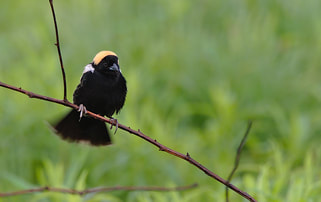 Spring means warbler migration. I change out the marimba CD in my car for an auditory field guide. I memorize the intro track, the narrator’s perky voice that I can’t believe belongs to a real man. I attend lectures about bicycle Big Years and song variation of veery across Appalachia. I read the Peterjohn guide to Ohio breeding birds and dog-ear pages for rare warblers. Birdsongs are like languages. They identify. They project. They entice. Birds use song to draw the borders of their territory, to warn of predators, to boast about their fitness to prospective mates. Birdsong adapts. Near highways, chickadees adapt their voices to sing above the noise. Some birds are given unique names by their parents. They sing their names to prospective mates and build whole family lines based on these names. Song defines species, and many good birders know the key to identification isn’t field marks and habitats, but song. In some species, the song is innate. For others song is learned, practiced, copied. In the catacombs of YouTube, I find hours of birdsong, recorded so that captive birds can learn to sing. And of course, there are the infamous mimics—thrashers and mockingbirds—which learn the songs of other birds and sometimes deceive even the most experienced of birders. Like a mockingbird, I spend hours listening and then trying to mimic the calls of warblers and owls. I learn through imitation. The simpler songs are often easiest to pair with mnemonics. Cardinals say “cheer, cheer” and goldfinches frantically repeat their “potato-chip” wherever they fly. Other calls are easy to learn because they are so spectacular. The bobolink has this kind of song. Bobolink song is complex and meandering, hard to process, but spring mornings and all summer long, bobs call out their unique name above the prairie as they have done for hundreds of years. Every community of bobolinks looks the same. The males are black with vanilla caps and white shoulders. Females and young birds are chestnut and brown, sparrow-like, with light eye lines and honeyed chests. Females are attracted by color and flight, but mostly by song. Male Bobs learn their songs from their community. This means that, although apparently the same, each population of bobs sings a slightly different version of the same song. Other birds display this behavior. Certain populations of veery favor one song type over another. But veery song is simple, usually only four notes, and the differences in rhythm and pattern are obvious once I know to listen for them. I begin to refer to some birds by their calls instead of their names. Carolina wren becomes tea-kettler. White-throated sparrow is poor-Sam-Peabody. I listen to recordings of bobolinks and compare them to my local flock. I like to imagine I could pick out one of my birds in their winter territory just by the unique cadence of his song. And that maybe they can recognize me, too. Christina Stump is a recent graduate of Bowling Green State University’s MFA program. She writes about nature and place-making, especially through the lens of speculative fiction and creative nonfiction. When not writing, Christina can be found in Ohio’s wetlands and forests, looking (and listening) for her nemesis: the Swainson’s Warbler.
0 Comments
This is the woods in April: It is cold, the kind of morning when the world is coated with a layer of frost and trees clench fistfuls of fresh buds against white-washed stems. Cold perseveres. Our carolina wren sings from the emaciated branches of the flowering dogwood. It is a weekday, and morning besides, so I am the only human in the woods. Before: Ohio was forest and wetlands and prairie. Bison shaped the land like elephants built the savannah. There were horses here, once. Not the wild horses we know now, but American horses. There were mastodons, cave lions, giant sloths, short-faced bears. All hunted or undone by time. Now: Ohio is defanged. The wolves and bears that come here are newspaper headlines and campfire stories, only half believed. The swamps, and the cranes that nested there, are reduced to hunting preserves and sewage treatment plants. A pair of sandhill cranes dance in the shadows of an oil refinery built for a pipeline that stretches like an ugly brown snake around the girth of the world. In the woods, I pretend that a human is just another animal, I pretend we have not built cities, launched spaceships, sparked wars. I pretend Earth recognizes me, accepts me. I am not a stranger here, I tell myself. But these trails are only decades, not centuries, old. This woods is curated, a living diorama. I am just a few miles from my car, from warmth and shelter and safety. Yet I say I belong here. I say I could live out here forever. I can’t even start a fire without help. I can only identify three edible plants: raspberry, strawberry, jewel-weed. Trees are yet unnamed to me, just clustered of tessellated fall leaves on the trail ahead of me. I do not live here. I am a visitor only. The woods knows this. Does not surrender its secrets. In an hour or two, I will regress, return to the car, drive thirty miles through darkness to a house built on the bones of conquerors and conquered. This town is the remnant of a fort. A reminder that a war was fought and lost and forgotten here. And before that: a town by a river. And before that there was only the river. And before that? Christina Stump is a recent graduate of Bowling Green State University’s MFA program. She writes about nature and place-making, especially through the lens of speculative fiction and creative nonfiction. When not writing, Christina can be found in Ohio’s wetlands and forests, looking (and listening) for her nemesis: the Swainson’s Warbler.
Christina Stump is a recent graduate of Bowling Green State University’s MFA program. She writes about nature and place-making, especially through the lens of speculative fiction and creative nonfiction. When not writing, Christina can be found in Ohio’s wetlands and forests, looking (and listening) for her nemesis: the Swainson’s Warbler.
|
FLASH GLASS: A MONTHLY PUBLICATION OF FLASH FICTION, PROSE POETRY, & MICRO ESSAYS
Categories
All
COVER IMAGe:"Ice Crystals"
|
|
Glassworks is a publication of Rowan University's Master of Arts in Writing 260 Victoria Street • Glassboro, New Jersey 08028 [email protected] |
All Content on this Site (c) 2024 Glassworks
|

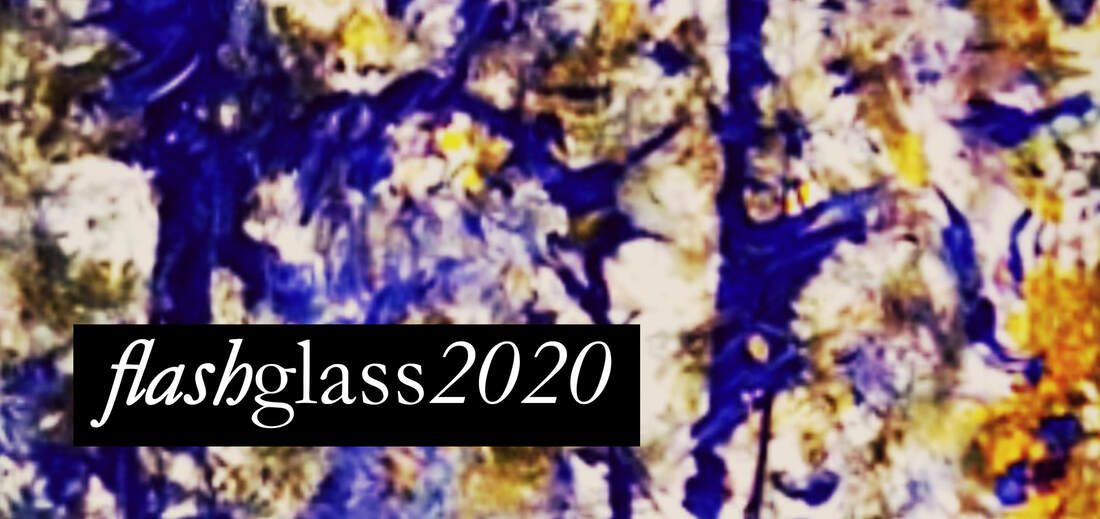
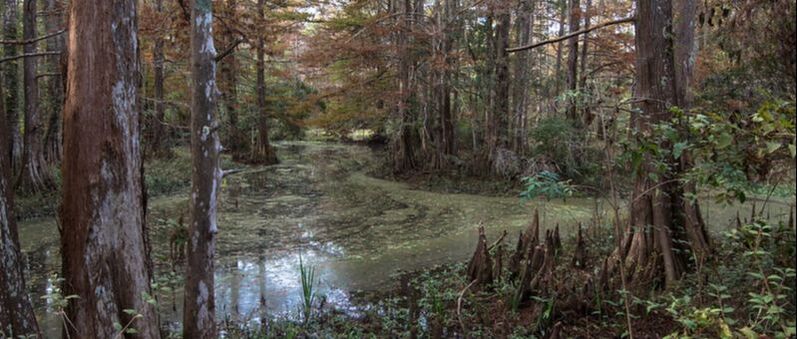
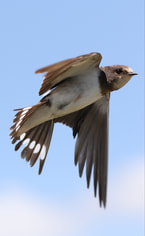
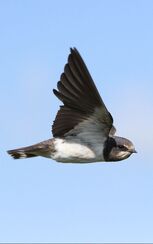
 RSS Feed
RSS Feed
